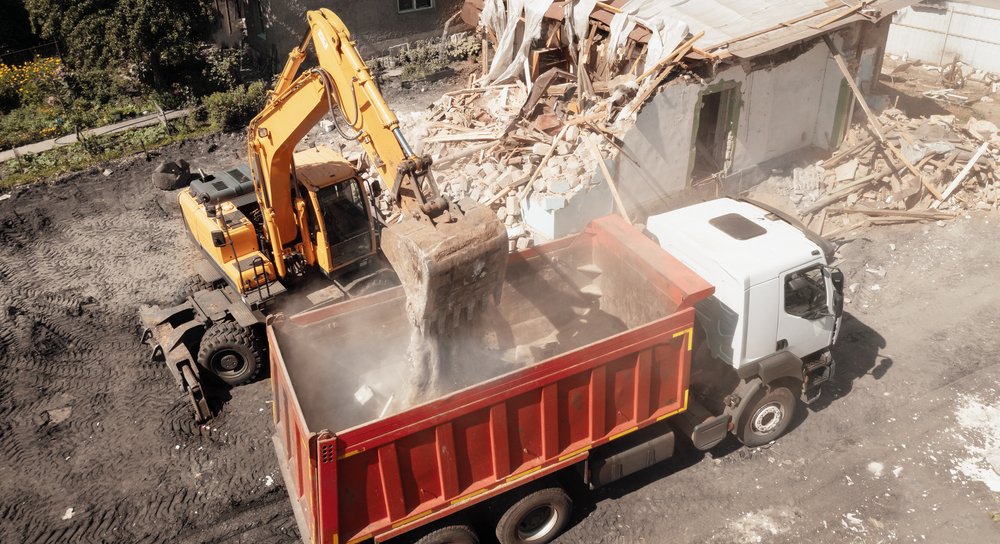When faced with the decision to alter a building, property owners often find themselves at a crossroads: should they demolish the existing structure or undertake renovations? Both options have distinct advantages and disadvantages, and making an informed choice is crucial to the success of any project. This blog will explore the nuances of demolition and renovation, guiding you through the decision-making process to help you determine the best approach for your specific needs.
Understanding Demolition
Definition and Types of Demolition
Demolition refers to the process of tearing down a building or structure. This can range from complete destruction to selective demolition, where only certain parts of a building are removed. Key types include:
- Complete Demolition: The entire structure is dismantled, often when it is beyond repair.
- Partial Demolition: Only certain sections are removed, which can be useful for renovations or expansions.
- Interior Demolition: The interior of a building is stripped out, leaving the exterior intact for renovation.
Common Reasons for Choosing Demolition
- Structural Integrity Issues: Buildings that are unsafe or have significant structural damage often necessitate demolition.
- Outdated Designs: If a building is no longer functional or aesthetically appealing, demolition can make way for new designs.
- Land Use Change: Zoning changes may require a complete redesign of a property.
The Demolition Process Explained
The demolition process typically includes several stages:
- Planning and Permits: Securing necessary permits and planning the demolition strategy.
- Site Preparation: Ensuring the site is safe and prepared for demolition, including utility disconnections.
- Execution: The actual demolition, which may involve heavy machinery and labor.
- Debris Removal: Clearing the site of debris and preparing for any new construction.
Understanding Renovation
Definition and Types of Renovation
Renovation involves updating or improving an existing structure without tearing it down. Common types of renovations include:
- Cosmetic Renovations: Updates that improve aesthetics, such as painting, flooring, and fixtures.
- Structural Renovations: Changes that affect the building’s structure, like adding rooms or altering layouts.
- Systems Upgrades: Improvements to essential systems like plumbing, electrical, and HVAC.
Common Reasons for Choosing Renovation
- Preservation of History: Maintaining a historic building can be essential for cultural reasons.
- Cost Savings: Renovating can often be less expensive than starting from scratch.
- Minimized Disruption: Renovation allows for the continued use of a property during updates.
The Renovation Process Explained
The renovation process generally involves:
- Assessment: Evaluating the current state of the building and identifying necessary updates.
- Planning: Developing a detailed plan that outlines the scope, budget, and timeline.
- Execution: Carrying out the renovations, often in phases to minimize disruption.
- Final Inspections: Ensuring all work meets local codes and regulations.
Key Differences Between Demolition and Renovation
Cost Considerations
- Demolition Costs: Often high due to equipment, labor, and waste removal; however, it may lead to lower long-term costs if rebuilding.
- Renovation Costs: Can vary widely based on scope but may offer significant savings compared to total demolition.
Timeframes for Completion
- Demolition: Generally quicker, especially for complete demolition, but rebuilding takes additional time.
- Renovation: Can be time-consuming, especially for major renovations that require detailed planning and construction.
Environmental Impact
- Demolition: Generates significant waste and can have a larger carbon footprint, but recycling materials can mitigate this.
- Renovation: Often more environmentally friendly, as it preserves existing structures and reduces waste.
Legal and Regulatory Factors
Both options require permits, but the process may vary significantly. Demolition typically involves more stringent regulations regarding safety and environmental impact.
Factors to Consider When Choosing Between Demolition and Renovation
Condition of the Existing Structure
A thorough assessment of the building’s condition can help determine whether it’s more cost-effective to renovate or demolish. Structural issues may point to the need for demolition.
Budget Constraints
Evaluate your budget for both options. While renovation might seem cheaper initially, hidden costs can arise if the building requires more extensive work than anticipated.
Intended Use of the Space
Consider how you plan to use the space after the project. If your needs have drastically changed, demolition might be more appropriate to meet new requirements.
Future Plans for the Property
If you plan to keep the property long-term, investing in a quality renovation might offer better value. However, if the land use is likely to change, demolition may be the better option.
Case Studies
Successful Demolition Projects
Highlight examples of successful demolition projects, such as:
- Urban Redevelopment: Large-scale demolitions that paved the way for new developments in cities.
- Safety-Focused Demolitions: Structures removed due to safety concerns, with detailed outcomes.
Successful Renovation Projects
Examples of effective renovations could include:
- Historic Restorations: Preserving architectural integrity while modernizing facilities.
- Residential Renovations: Transforming outdated homes into modern living spaces.
Lessons Learned from Both Approaches
Discuss common challenges and successes in both demolition and renovation projects to provide insight into best practices.
Making the Decision: A Step-by-Step Guide
Assessing Your Needs and Goals
Begin by outlining your project’s goals. Determine what you hope to achieve through demolition or renovation, whether it’s improved functionality, increased value, or aesthetic appeal.
Consulting with Professionals
Engage architects, contractors, and project managers to gain insights into feasibility and costs. Professionals can provide valuable assessments that guide your decision.
Budgeting and Financing Options
Explore various funding options for your project, including loans, grants, and partnerships. Understanding financial implications is crucial for making informed decisions.
Conclusion
Recap of Key Points
Summarize the main points discussed throughout the blog, emphasizing the importance of considering both demolition and renovation carefully.
Final Thoughts on Making the Right Choice
Encourage readers to weigh their options thoughtfully, reminding them that each project is unique and may require a tailored approach.
Encouragement to Approach the Decision Thoughtfully
Conclude by stressing the importance of informed decision-making and thorough planning for successful project outcomes.











Find Us on Socials